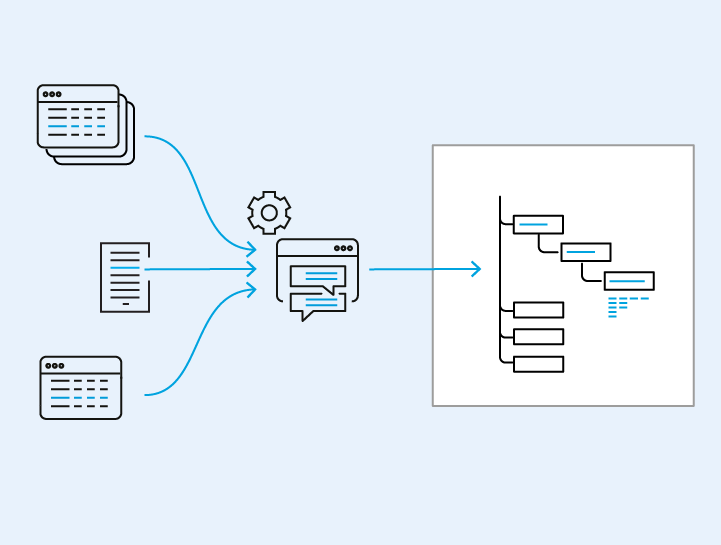Search results (7)
Skip results of view Data stories

Linking data: data.europa.eu
In our ‘Linking data’ series, we present EU projects that use linked open data (LOD) . You may be wondering, what data is linked in their projects? Why did they decide to use LOD? What benefits does it bring? Follow the series to find out. In this episode, we will take a closer look at data.europa.eu, the official portal for European data. Central point of access to public sector data in Europe In the EU, the public sector is one of the most data-intensive sectors . Public sector bodies produce, collect and pay for vast amounts of data, known as public sector information or government data. If

Linking data: Data Catalogue Vocabulary Application Profile
In our ‘Linking data’ series, we present EU projects that use linked open data (LOD) . You may be wondering, what data is linked in their projects? Why did they decide to use LOD? What benefits does it bring ? Follow the series to find out. In this episode, we are presenting the Data Catalogue Vocabulary (DCAT) and its application profile for data portals in Europe. Read on to find out what DCAT is, and how and why it uses LOD. All about metadata What is metadata? In simple words, metadata is data about data. Just like a label on a soda can provides metadata about the drink, and a library

Linking data: Kohesio platform
In our ‘Linking data’ series, we are presenting EU projects that use linked open data (LOD) . What data is linked in their projects? Why did they decide to use LOD? What benefits does it bring? Follow the series to find out. In this episode, we are presenting the Kohesio platform. Read on to find out what it is, and how and why it uses LOD. EU cohesion policy The EU’s cohesion policy contributes to strengthening economic, social and territorial cohesion in the European Union. It aims to correct imbalances between EU Member States and between regions. It delivers on the European Union’s

Linking data: Route Compatibility Check
In our ‘Linking data’ series, we are presenting EU projects that use linked open data (LOD). What data is linked in their projects? Why did they decide to use LOD? What benefits does it bring? Follow the series to find out. In this episode, we are presenting Route Compatibility Check, an application developed by the European Railway Agency (ERA). Read on to find out what it is, and how and why it uses LOD. European railway ecosystem The EU has one of the densest railway networks in the world. However, not all European countries have the same system of railway infrastructure and the same set of

Linking data: European Science Vocabulary
In our ‘Linking data’ series, we are presenting EU projects that use linked open data (LOD). What data is linked in these projects? Why did they decide to use LOD? What benefits does it bring? Follow the series to find out. In this episode, we are presenting the European Science Vocabulary. Read on to find out what it is and how and why it uses LOD. CORDIS – EU research and development database The Community Research and Development Information Service (CORDIS) is a multilingual platform offering access to data about EU-funded research and innovation projects. Its mission is to bring research

Linking data: EU vocabularies
In our new ‘Linking data’ series, we are presenting EU projects that use linked open data (LOD). What data is linked in these projects? Why did they decide to use LOD? What benefits does it bring? Follow the series to find out. In this episode, we focus on EU reference data. Read on to find out what it is and how and why it uses LOD. What is reference data? To start, we will introduce you to some important concepts. Reference data In simple terms, reference data is data used to classify or categorise other data. A reference data vocabulary defines the values allowed to be used in a specific

Linking data: what does it mean?
This article is the introduction to our new ‘Linking data’ series. It defines linked data and linked open data (LOD). The rest of the series will present EU projects that use LOD. How and why do they use it? Follow the series to find out. Data is everywhere and we are constantly producing more of it. As individuals, we create data while browsing the internet, booking a flight or shopping online. Public institutions generate data from traffic monitoring and weather tracking. Used correctly, all of this data can bring benefits to our society as a whole and to each of us individually. It can help
